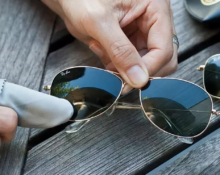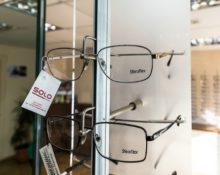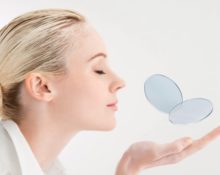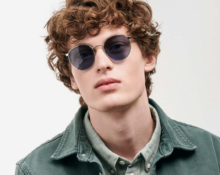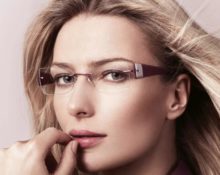When ordering glasses from an optician, many people focus on the color and shape of the frame. The main criteria when choosing are price and personal taste. The emphasis is on improving the image, compliance with the latest trends. The attitude towards them as a fashion accessory is quite understandable. But few people pay attention to the lenses themselves, and yet our vision directly depends on it. Products from China, Japan, Korea and European manufacturers are widely represented on the sales market today. German optics are distinguished by the highest quality and variety of functionality. You will learn how to choose lenses and how they are characterized in this article.
What types of glasses lenses are made in Germany?
All lenses are divided into two types, depending on the material:
 polymer, that is, created from plastic, which in turn have several varieties. They differ in the quantity and quality of base coatings - anti-reflective, strengthening, antistatic;
polymer, that is, created from plastic, which in turn have several varieties. They differ in the quantity and quality of base coatings - anti-reflective, strengthening, antistatic;- mineral, made from glass.Less popular with consumers because they are heavier than plastic and are not suitable for every frame. For example, in thin metal or screws, their weight may cause deformation of the mounting screws.
The terms of use of lenses depend on the quality and class of coating. A large volume of optical products from German manufacturers is occupied by world leaders such as Rodenstock, Rupp und Hubrach and Zeiss, which are guarantors of unsurpassed quality. Let's talk about each of them separately, as they all deserve attention.
Rodenstock
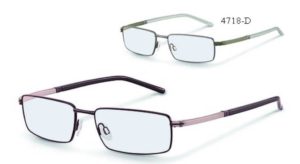 The company was founded in 1877, and began producing spectacle lenses in 1878. Over the 140 years of its existence, it has gained extensive experience and an excellent reputation, using unique, cutting-edge technologies. Modern coatings are regularly developed to improve wearing comfort.
The company was founded in 1877, and began producing spectacle lenses in 1878. Over the 140 years of its existence, it has gained extensive experience and an excellent reputation, using unique, cutting-edge technologies. Modern coatings are regularly developed to improve wearing comfort.
The mineral optics have a double-sided Multisin coating with residual reflex and a super-effective Supersin coating with dirt- and water-repellent properties.
Polymer lenses have a wider range of coatings:
- Duralux – hard varnish reliably protects the lens from mechanical damage in the form of scratches, but there is no anti-reflex layer;
- NS Supersin - a multilayer solid anti-reflex and hydrophobic coating protects against water, dirt and fogging during temperature changes;
- Supersin – does not have the properties of the previous one, but has super-anti-reflex properties;
- Ultrasin – applied on both sides, combined, increases the contrast of vision;
- TopCoat - includes all the latest technologies from the company. High scratch resistance, grease-moisture resistance, excellent light transmittance, eye-relaxing effect.Anti-reflex technique creates the feeling of the absence of lenses, which do not require frequent cleaning and have a long service life.
- Solitaire Protect Plus - in addition to the parameters described above, it is characterized by antistatic properties that repel microscopic dust particles.
Rupp und Hubrach
The manufacturer of premium optics began its activities in 1922. A wide range consists of polymer and polycarbonate raw materials:
 YSIS is a group of monofocal personal optics. Takes into account the anatomical individuality of the face and visual stereotypes;
YSIS is a group of monofocal personal optics. Takes into account the anatomical individuality of the face and visual stereotypes;- SPORTS – The basic wide curvature is designed specifically for sports and sun protection, improves panoramic visibility and adequate distance assessment. Thus increasing human safety during sports activities;
- Joker - contain a refractive index in the range from 1.5 to 1.67 and are affordable;
- Express - equipped with a multifunctional coating on both surfaces to improve consumer properties using nanotechnology.
Zeiss
160-year history in the production of optics of various directions. Revolutionary technologies with a refraction range from +20 diopters to -30. The design of some lenses allows you to take into account the visual characteristics of a person and the anatomy of the face. Variability makes it possible to individually select coatings - water-repellent, abrasion-resistant, protective against UV rays, and relieving visual fatigue.
Tips for choosing German lenses
 When selecting spectacle lenses, you should pay attention to the price-price ratio quality and manufacturer;
When selecting spectacle lenses, you should pay attention to the price-price ratio quality and manufacturer;- for children it is better to purchase plastic ones, as they are lighter and less susceptible to mechanical stress, which guarantees safety from injury during active games and falls;
- for people with a high degree of myopia of 10 diopters and above, it is better to give preference to glass materials, since the edges in them after processing are much narrower;
- For patients with presbyopia over 40 years of age, instead of bifocal lenses, special progressive lenses have been developed that are capable of adjusting optical power while maintaining external data. This effect is achieved using a specific surface shape;
- The refractive index of rays in polymer lenses varies from 1.5 to 1.74. The higher the coefficient, the thinner, lighter, stronger the material, which makes it more expensive;
- modern modifications contain special multi-coatings with a full range of properties: anti-reflective, hydro-grease-dirt-repellent, strengthening and others;
- For office workers, an alternative would be to choose lenses of a specific design that provides comfort and relieves fatigue during long-term work on the computer, eliminates glare and increases picture clarity. It is not recommended to use them in other situations;
- Corrective glasses must also have protection from sunlight, which can cause eye diseases.
To select the right glasses, you can seek help from a manager or salesperson, who will give detailed advice on choosing the right glasses for your lifestyle and optics needs, as well as qualified advice on how to care for them.


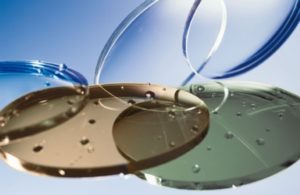
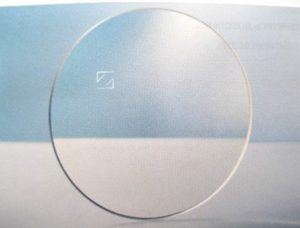
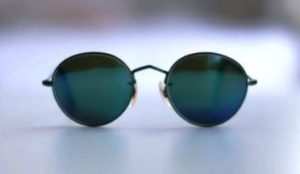
 5
5